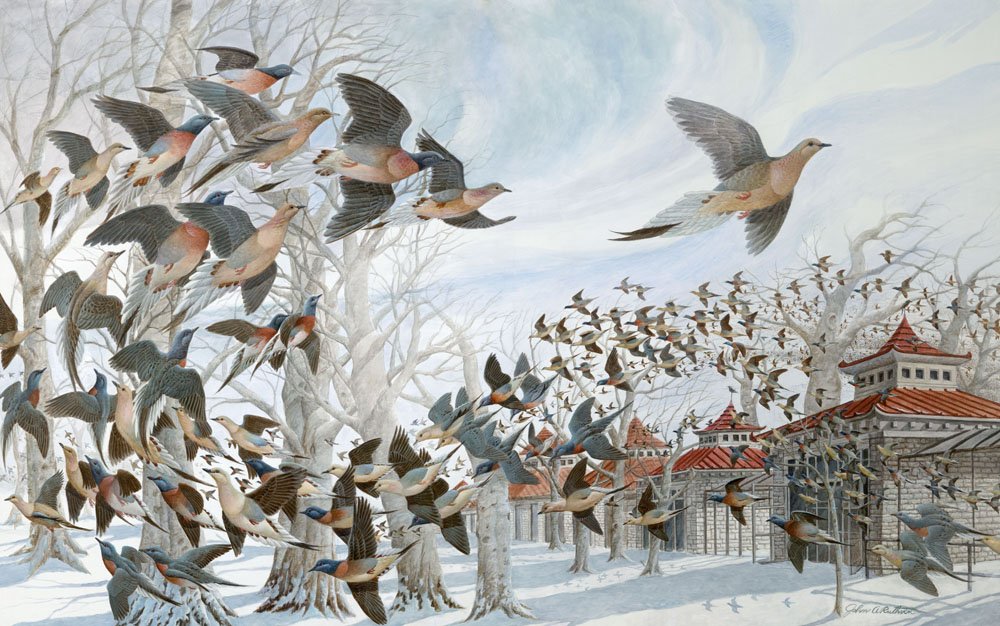John Ruthven 1924 - 2020
I was kind of a born naturalist and could draw, and my family realized both of those situations and they geared me towards that," said wildlife artist John Ruthven, often called "the 20th-century Audubon."
- John Ruthven
It is with great sadness to share that the Art Academy of Cincinnati alumnus John Ruthven has passed. John has remained a big part of the Art Academy family since he was a student in 1946. He will be remembered for his art, philanthropy, kindness, and as a person who cared deeply for his community and the conservation of nature. Below we have shared a few examples of the work John contributed to the world and his beginnings at the Art Academy of Cincinnati.
“When I was 10 years old, my family signed me up for Saturday morning drawing classes at the Art Academy,” he said. “My teacher’s name was Mr.Goddard, and he was a stickler for capturing the moment. I never forgot it. He would give us a subject… and he’d give us 15 minutes to capture the moment. That was a major thing in my artistic career.”
Ruthven served in the navy during World War II, then spent a year and a half at the Art Academy on the G.I. Bill, receiving a certificate in 1947, and another year at the Central Academy of Commercial Art run by Jackson Gray Storey.
“I rented one room on Gilbert Avenue, right near downtown, and called it ‘Ruthven Studio,'” he said. “I put a sign in the window, ‘I paint anything and everything.’ That really did it. I wasn’t too self-conscious about it because I really could draw. Someone walked into my studio one day and said, ‘I saw your sign in the window. Do you do cartoons?’ I said, ‘Absolutely.’ He said, ‘Well, I’m starting a new business. It’s going to be called Play-Doh. I need a Play-Doh boy.’ And I said, ‘I’d love to do that.’ Talk about an opportunity. And so, for 15 years I did most of the Play-Doh company’s artwork.”
In 1960, Ruthven painted the Federal Duck Stamp, and his career took off. He specialized in wildlife paintings, especially birds. “I knew birds very well,” Ruthven said. “From my early association with Audubon and studying wildlife in general, I was never without my binoculars, studying birds.”
Ruthven’s formal relationship with the Great Parks began in 1973 when he dontated an original painting of a chipmunk to the park district for use promoting the successful 1973 park levy campaign. Though Ruthven says he crafted the painting at Woodland Mound, it, fittingly, is displayed at the Sharon Centre in Sharon Woods. Sharon Woods was a favorite park of Ruthven as a child and it remained his favorite county park throughout his life.
Cincinnatians may be most familiar with Ruthven’s mural “Martha, the Last Passenger Pigeon” at the corner of Seventh and Vine streets. The original painting was created to commemorate the 100th anniversary of Marth’s death, and the extinction of the species.
In 1972, Ruthven earned the distinction of being named the first Artist of the Year by Ducks Unlimited. Ruthven contributed paintings for prints that have raised nearly $2 million to protect and preserve wetlands in North America. His painting of a cardinal for Ohio’s most popular license plate raised more than $5 million for the Ohio Division of Wildlife.

